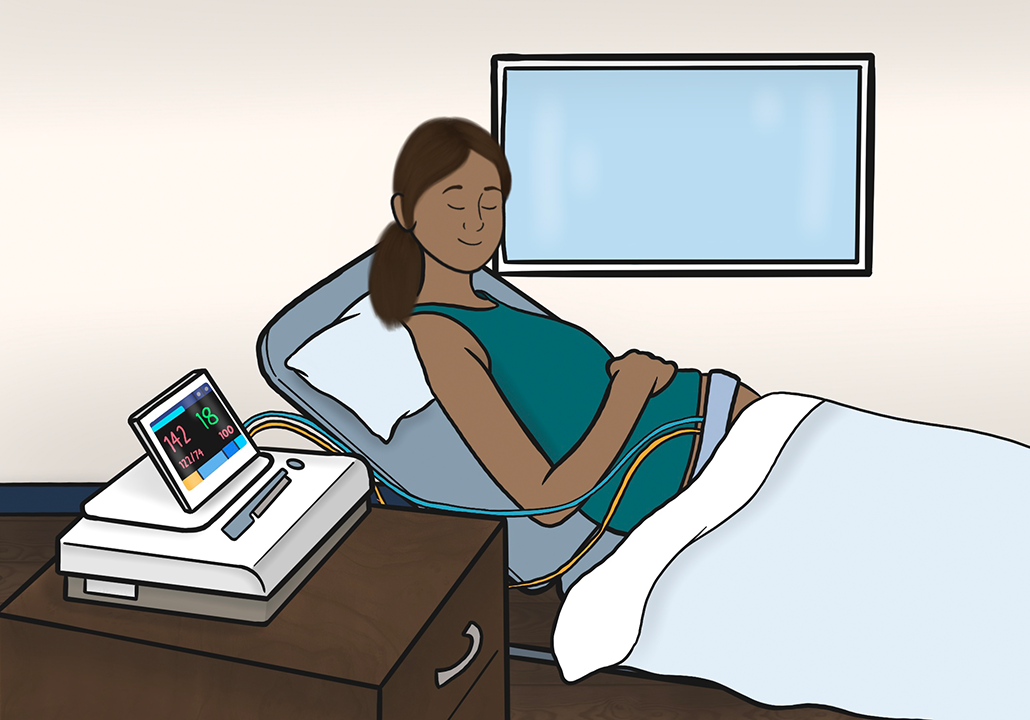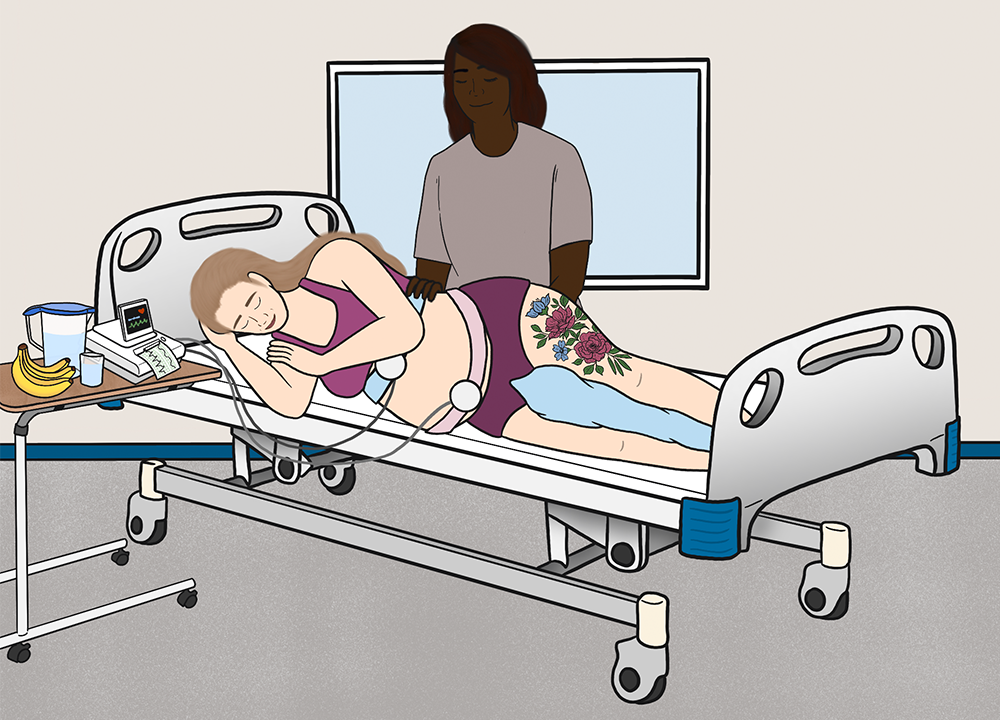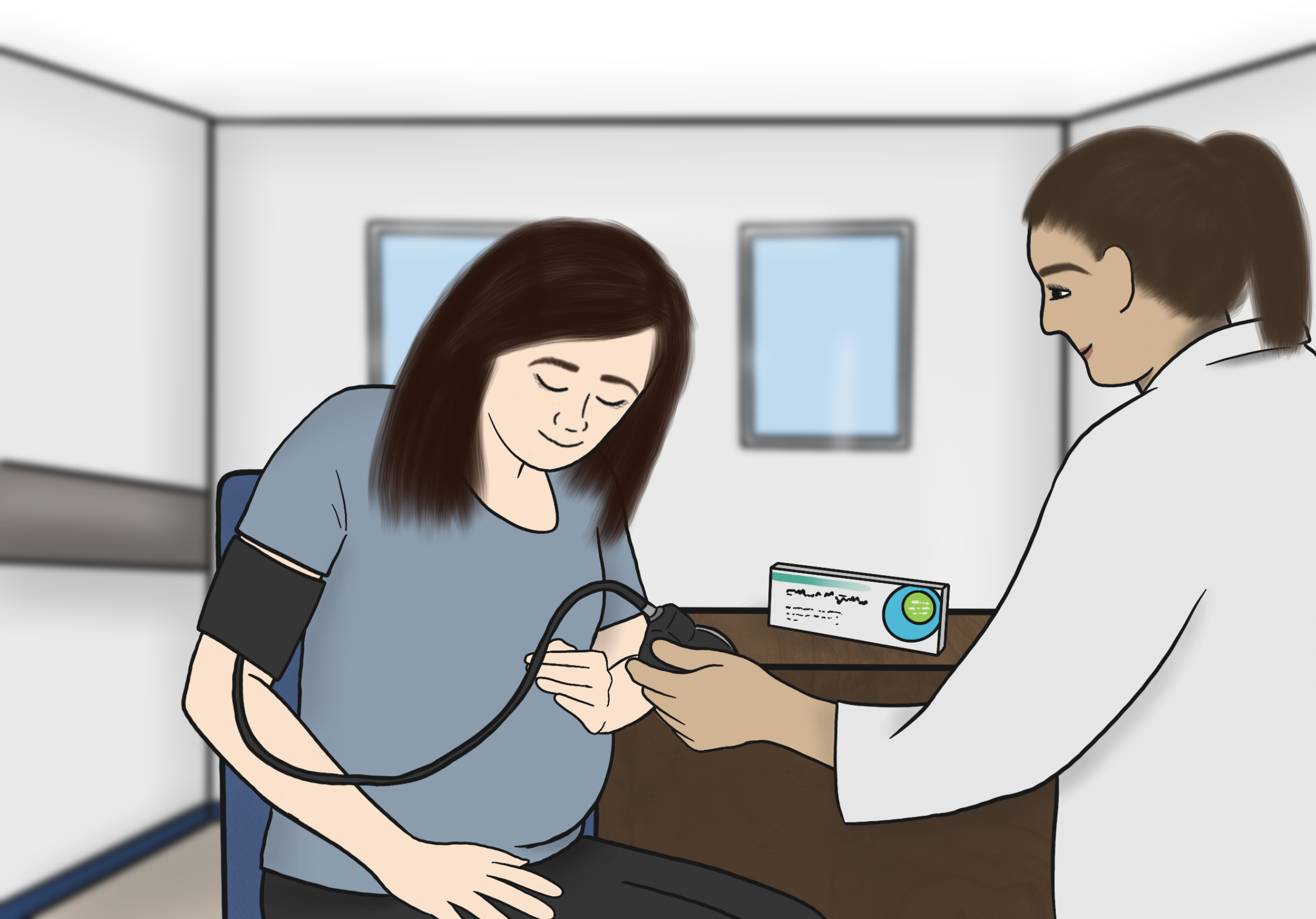
Exploring the Cutting-Edge Innovations of Arab Health 2024: A Glimpse into the Future of Healthcare
9 February 2024
Nutrition and Hydration week 2024
12 March 2024
Are Increasing IOL Rates Impacting on The Safety of Maternity Services
Are increasing induction rates impacting on the safety of maternity services in the UK?
The staffing crisis within the NHS as a whole has been a topic of great discussion and debate for nearly two decades, and one which continues to worsen due to a consistent lack of acknowledgement and action taken from the Government. The workforce crisis within maternity services is evident. Following a recent survey from its members, the Royal College of Midwives (RCM) revealed that midwives across England work around 100,000 extra unpaid hours per week to keep maternity services safe.
The survey revealed (of those surveyed):
88% – had worked additional unpaid hours, with 25.8% working at least 5 hours or more unpaid
87% – reported their maternity units were not staffed safely.
64% – reported they felt burnt out and exhausted at the end of most of their shifts.
26% – reported feeling burnt out or exhausted after every shift.
74% – reported that they were often or always faced with unrealistic time þressures or workloads.
“Report after report has made a direct connection between staffing levels and safety, yet the midwife shortage is worsening and we still have no NHS workforce plan to address it”
~ Dr Suzanne Tyler, RCM Executive Director, Trade Union
How long can this continue? How much more can maternity staff endure? How long can the NHS carry on being propped up by the goodwill of its staff? Maternity workers are at breaking point, and midwives are leaving the profession because they are unable to provide the quality of care they desperately want because they’re exhausted, fragile and burnt out. On top of that, 4 out of 5 (80%) NHS staff report that pay is the main reason they would quit their job. Falling pay in the context of the cost of living crisis is creating widespread concerns about pay and staff retention.
There’s no denying that we are still picking up the pieces of the Covid-19 pandemic. We are still wading through the aftermath, and the front line staff who remain are doing the best they can, with the resources they have available to them, in what are very challenging times. But it’s important to recognise that the Covid-19 pandemic exacerbated issues that were already present.
The latest CQC (Care Quality Commission) State of Care Report, shows our maternity system is in crisis. Despite recommendations for change since 2015, the latest report has found almost half of all maternity services inspected so far in 2023 are ‘in need of improvement’, or ‘inadequate’ – in other words, substandard. Key themes surfaced from the report include staff shortages, staff sickness, toxic workplaces, leadership, safety, a culture of blame and systemic racism. It paints a very bleak backdrop for those that remain in the profession, and for those they continue to serve.
“A serious, persistent and worsening shortage of midwives and other staff is having an impact on the safety and quality of care for women, babies and families … choice for women is being eroded … For many, crisis mode is now the norm”
~ Gill Walton, Chief Executive, RCM
As part of the NHS Long Term Plan the Government has invested millions of pounds into uplifting maternity services and boosting workforce numbers. However, the staffing crisis will continue if it fails to recognise and address the reasons for poor retention. If the system cannot support and look after the staff it already has, midwives will continue to leave the profession and attempts to recruit new midwives will be futile.
The NMC Insights Report (2023) has also highlighted that poorly supported newly qualified staff lack confidence in their ability to practise safely and are more likely to leave the profession. Without a prioritised focus on good quality preceptorship, we will lose midwives before they’ve really begun their careers. But effective preceptorship requires adequate numbers of staff to be able to support them effectively, which cannot happen at present.
“Professionals’ early experiences shape their subsequent satisfaction, confidence, and ability to care for diverse groups and address health inequalities”
~ NMC.
According to the latest National for Office National Statistics (ONS) statistics, in 2022 there were 605,479 live births – a 3.1% decrease from 2021. But between 2020 and 2021 there were 10,000 additional births across the country. More and more women are requiring complex care and support which impacts on the demands of maternity services and the already depleted workforce. England faces a deficit of 2,500 full time midwives, a shortage which has existed for over a decade according to the RCM.
In 2015 the Government set a goal to halve the 2010 rates of stillbirths, neonatal deaths, maternal deaths and brain injuries in babies that occur during or soon after birth by 2030, with an expectation of a 20% reduction by 2020. In 2017, the Government brought forward this target to 2025 and extended it to include a reduction in the national rate of preterm births from 8% to 6% by the same year. So far we have not succeeded.
Stillbirth rates remain higher than they were pre-pandemic. In 2019 and 2020 the rate of stillbirths per 1000 total births was 3.8 and 3.9 respectively. In 2022, the rate was 4.0 per 1000 total births, having dropped slightly from 4.1 per 1000 in 2021. In Wales the stillbirth rate remains at 4.4 per 1000 as it has been since 2020. The Government’s goal to reduce this rate by 2025 seems ambitious at best. In order to achieve this, the rates would have to decrease to 2.6 per 1000.
One area of care which needs to be addressed in the context of worsening staff shortages, is induction of labour. Rates of induction are increasing. The most common reason for induction being to reduce the risk of stillbirth in post dates pregnancies. However, we can see from the above statistics, that increasing the rate of induction overall, is not having the desired effect on the rate of stillbirths.
If we look back at statistics from over the years, between 1990-1991, 76.9% of labours started spontaneously, the rate of induction was 17.7% and the caesarean (onset of labour) rate was 5.3%. If we fast forward to 2020-2021, only 47.3% of labours started spontaneously, the rate of induction was 34.4% and the caesarean rate (onset of labour) was 18.3% (NHS Digital).

These figures have drastically changed in that 30 year period, and the induction rate in the UK continues on an upward trend. Induction is now the most commonly performed intervention in maternity care. In 2021 approximately a third of all pregnant people underwent an induction to get their labour started, with rates varying widely between units – up to 50% in some maternity services.
There’s no doubt that the increasing induction rate and increasing complexities in modern maternity care are impacting workload, and potentially having unintended consequences on the already pressured services. Induction is a complex process which creates greater strain on the system. Patients undergoing induction routinely experience delays at every stage of the care pathway due to staff shortages and acuity levels. Increasing rates also create strains on resources and day to day workload, have significant financial implications, and can impact adversely on maternal satisfaction and patient experience, quality of care, as well as fetal and maternal outcomes.
Induction by its very nature involves getting the body to do something it’s not ready to do. Labour induction involves preparing and stimulating the body by artificial means to go into labour. This can either be achieved by pharmaceutical (medication), or mechanical (medical procedures) means. Sometimes both methods are needed to achieve established labour and birth.
An induction will be offered when the potential risks of continuing the pregnancy are considered higher than the risks of artificially starting labour. For some, induction can be a life saving process. However, when it is not medically indicated, we could be putting both at risk.
Common reasons for induction:
- Postdates
- High blood pressure
- Gestational diabetes/diabetes
- Large for gestational age (LGA)
- Grow restricted babies/small for gestational age (SGA)
- Reduced fetal movements
- Raised maternal age
- Low PAPP-A
- Multiple pregnancies
- Premature prelabour rupture of membranes (PPROM)
The induction process usually involves 4 distinct stages:
- Membrane sweep (also known as a stretch and sweep)
- Cervical ripening
- Breaking the waters
- Synthetic oxytocin (hormone drip).
Not everyone will need all 4 steps, and not everyone will start from step 1. However, steps will be walked through in order, until labour and birth is achieved.

Due to the sudden onset of the Covid-19 pandemic and associated restrictions, maternity services had to swifty adapt their work processes to reduce footfall through the hospital and reduce ‘unnecessary’ admissions in an attempt to reduce Covid contacts and infection rates. A study from 2021 (Harkness et al 2021) evidenced clear changes to induction practices due to the pandemic. It showed that 23% of NHS Trusts reported change in methods of cervical ripening during this time. Many units introduced, or increased the use of at-home cervical ripening (CR) methods or home-based induction services. A noteworthy finding of this study was that “the shift to outpatient IOL was clinician-driven rather than service user-driven”. Which is key as some professionals are promoting higher levels of induction by making outpatient or home-based induction services more readily available.
This trend has continued beyond the pandemic and is being considered as a solution to lessen the workload on maternity staff and to increase patient experience. At-home induction services have been implemented across the NHS with varying degrees of success, despite limited research into its effects, outcomes and gaps in evidence regarding birthing peoples’ experiences.
It’s important to recognise that whilst induction is an intervention which can be life saving for some, it does also come with additional risks compared to a physiological labour, and will affect an individual’s birth options and experiences. The process of induction will impact on when, where and how an individual can give birth and the choices that are available to them.
Potential risks to mothers:
- Increased continuous fetal monitoring
- Increased vaginal examinations
- Increased interventions (including assisted vaginal birth – forceps, ventouse, and associated risk of severe perineal tearing)
- Increased risk of caesarean birth
- Increased risk of infection
- Increased need for analgesia
- Reduced mobility in labour
- Longer, stronger, more intense contractions
- Reduced feelings of control, leading to increased disappointment and potential birth trauma.
Potential risks to baby:
- Increased risk of fetal compromise and birth trauma
- Increased risk of resuscitation
- Increased chance of being born preterm
- Increase chance of intervention
- Increased chance of being admitted to the neonatal unit
- Increased chance of being readmitted to hospital with breastfeeding difficulties and infection.

The 2021 NICE (National Institute of Health and Care Excellence) guidelines for induction of labour saw a shift towards discussing induction with all women and to recommending earlier inductions. Not only does this increase the number of inductions being performed, it also undermines birthing peoples’ belief in their own bodies and capabilities to birth their babies. It plays into the fear cycle that surrounds modern maternity services.
There is growing concern that due to the growing number of inductions being offered, and the increasing staffing crisis, pregnant women or people are not having the opportunity to discuss this care pathway appropriately. A recent review of evidence found decisions about induction were largely made by clinicians rather than women. That decisions about induction were being made with “little or no discussion”. This doesn’t mean that conversations about induction of labour are not happening at all, more that they are not being discussed in a manner where people feel included, valued and respected in the decision making process.
“People have the right to be involved in discussions and make informed decisions about their care”
– NICE
NICE outline that discussions about induction should include:
- Face to face discussion and written information
- Reasons why induction is being offered
- When, where and how it will be offered – and how that will affect individual birth choices
- Pain relief options available as induction is often experienced as more painful
- Alternatives if someone chooses not to have an induction, or if it is decided later that they do not want to proceed, or if they change their mind at any stage
- Risks and benefits in specific circumstances
- Induction may not be successful and what happens if that occurs
- Time should be given to discuss information with others, if they wish, before making a decision
- Ensure there is an opportunity for questions, to look over information given, and time to think about options presented before making a decision.
“Recognise that women can decide to proceed with, delay, decline or stop an induction. Respect the woman’s decision, even if healthcare professionals disagree with it, and do not allow personal views to influence the care they are given”
– NICE
Despite our professional opinion, people have the right to accept or decline any medical recommendation or intervention including those which may be considered life saving to either the mother or the baby. Failure to provide adequate unbiased information, or coercing someone into making a decision is a breach of professional and legal standards.
The problem is that in depth conversations of this nature require time, and unfortunately time is a commodity in scarce supply within the NHS. This makes it very difficult for health professionals to discuss the option of induction of labour appropriately, and for women and people to have their say, ask questions, address concerns, and feel that their decision is being heard and respected. Consequently, women and people are entering into the process of induction without fully understanding the whole picture, without knowing that they had a choice or fully understanding the potential risks involved.
The decision by NHS England last year to disband targets for the implementation of continuity of carer (CoC) models within midwifery (largely to the workforce crisis), was a welcome one, as there simply are not enough midwives to put this model into place effectively. This may have been a reasonable practical decision to be made based on staffing numbers, but it is well known that CoC models of care have better outcomes for women, people and their babies.

“This relationship between care giver and receiver has been proven to lead to better outcomes and safety for the woman and baby, as well as offering a more positive and personal experience; and was the single biggest request of women of their services that was heard during the National Maternity Review”
~ NHS England.
Given we know that CoC models of care create better outcomes for birthing people and their babies, and create greater job satisfaction for professionals, by not addressing the staffing issues, we are knowingly denying families the opportunity for better care, and staff a better work life balance. A CoC model of care would make shared decision making easier. Women and their care providers would have the opportunity to form mutually respectful relationships, making personalised care much easier to achieve. Women would feel more involved in their care which would lead to more positive feelings surrounding their birth.
It has been strongly recommended that we listen to the voices of our birthing communities. For years they have told us that access to home birth services, birth centres, true one to one care in labour and continuity models of care is what they want, and for years they have been ignored. Yet we know that all of those things lead to better outcomes for mums, babies and staff, and we continue to be let down.
Whilst the Government ‘firefight’ and makes quick fixes to patch up the immediate gaps in the system, little consideration is given to the possible unintended consequences or the long term implications of these decisions. Any decisions that are made to improve maternity systems, need to ensure they are not disrupting the things that are already going right. We run the risk of over-generalisation and increased intervention that may work for some, without evidence that they will work for all, or that everyone is happy to receive them.
Responses to the All-Party Parliamentary Groups’ (APPG) call for evidence from parents, members of staff and organisations painted sobering scenes of “services that are understaffed, overstretched and letting down women and families”. It revealed that the staffing crisis is “severe, pervasive and having a profound impact on maternity and neonatal services”.
“This is a crucial report that highlights the impact staffing shortages have on maternity and neonatal care services. Following on from the Ockenden report, this report affirms yet again that investment is needed to ensure maternity and neonatal services are well staffed and supported so that we deliver the care women and families need”
~ Cherilyn Mackrory MP, Co-Chair of the APPG on Baby Loss
With burn out at an all time high amongst staff, midwives leaving the profession as they feel unable to do the job that they trained to do, newly qualified staff crumbling under the pressure, and public satisfaction with the NHS at its lowest, something needs to change… and FAST! If not, we risk physical, psychological, emotional and cultural harm to our colleagues and the birthing people we serve.




